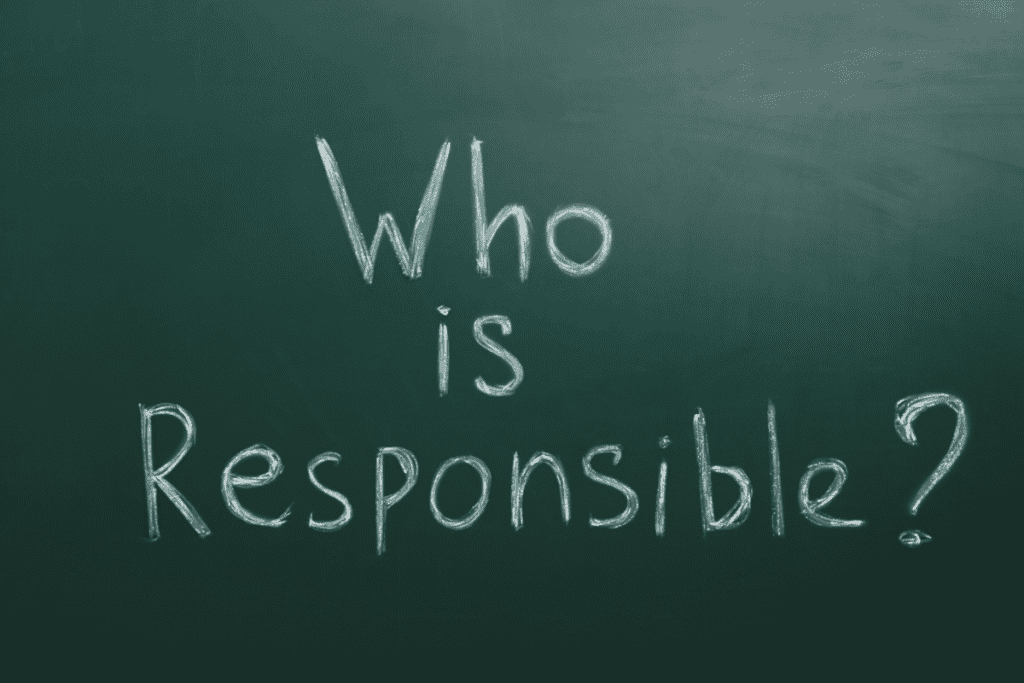How to Use a RACI Defined Matrix: Using RACI Chart for Project Success
What is RACI Chart? RACI Defined
What is RACI Defined? RACI is a Project Management tool that ensures alignment on roles and responsibilities for tasks and deliverables within a project. Tasks or deliverables are assigned to individuals or groups based on four key contributor types: Responsible, Accountable, Consulted, and Informed.
It essentially is a simple grid system that helps assign and track responsibilities for various tasks and deliverables at every stage in the project lifecycle.
Understanding the RACI Concept
A RACI Matrix is a handy tool used in project management, serving as an acronym for Responsible, Accountable, Consulted, and Informed. This responsibility assignment chart helps team members understand their roles within the project’s tasks and processes.
It’s essentially about delegating duties — determining who does what.
Defining these roles gives clarity about each person’s involvement level throughout the project lifecycle. The ‘Responsible’ party performs the task at hand; the ‘Accountable’ individual oversees completion and approves work outcomes.
Those ‘Consulted’ provide necessary input or advice during task execution; while those marked as ‘Informed’ receive updates on progress but don’t actively partake in task fulfillment.
Hence, deploying a RACI matrix can streamline communication lines within your team and enhance productivity by ensuring each participant knows what they are responsible for in every phase of your project.
How Does a RACI Chart Work?
The practical workings of a RACI, also known as a Responsibility Assignment Matrix (RAM), defines who is accountable for overall success, and who is responsible, for specific duties. The Responsibility Assignment Matrix also provides astute guidance on who should be consulted for advice or kept updated (informed) about progress.
It’s no exaggeration to say that handling complex projects with multiple stakeholders becomes significantly easier with a RACI matrix in place. By clearly designating roles and accountability lines it eliminates confusion.
Additionally important to note is how well the RACI model can enhance communication within your team. This established framework highlights everyone’s role in the bigger picture of the project scheme. By providing transparency of project roles to all responsible parties, duplication of work can all but be eliminated.
Utilizing this method ensures better collaboration among members leading to streamlined workflow which consequently improves overall project outcomes.
10 Benefits of Using RACI in Project Management
- Clarity in Roles and Responsibilities: The RACI matrix ensures that every team member understands their role within the project and what tasks they are accountable for.
- Conflict Resolution: By defining roles clearly, the RACI matrix helps to prevent and resolve conflicts regarding task ownership within a project team.
- Enhanced Communication: The matrix enhances internal communication as everyone knows who to consult or inform about changes or decisions related to the project.
- Efficient Resource Allocation: With clear delineation of tasks, managers can better allocate resources, reducing inefficiencies caused by misunderstanding or confusion over responsibilities.
- Accountability Assurance: The RACI matrix holds individuals accountable for their roles which significantly contributes to overall project success.
- Improved Project Efficiency: By removing ambiguity on who does what, the project progress becomes streamlined leading to improved time management and efficiency.
- Quick Decision Making: Knowing exactly who is accountable for what speeds up decision making which helps in maintaining timely schedules of the projects.
- Fosters Team Collaboration: The use of a RACI matrix encourages better collaboration between team members as it aligns everyone’s efforts towards achieving common goals.
- Agility in Task Management: It provides flexibility in managing tasks by allowing adjustments of roles based on changes in team dynamics or project scope during the lifecycle of a project.
- Blueprint for Success: Considered as a blueprint for success, its systematic approach towards task allocation reduces chances of oversight or forgetting important steps leading ultimately to successful completion of projects.
7 Scenarios as to when Should You Use a RACI Chart
A RACI chart, with its clear delineation of roles and responsibilities, is an invaluable tool in project management and organizational processes. But when exactly should you consider using one? Here are some scenarios where a RACI chart can be particularly beneficial:
- Initiating a New Project: At the outset of any project, it’s crucial to establish clear roles and responsibilities. A RACI chart can help ensure that every task has an accountable party and that there’s no ambiguity about who is responsible for what.
- Complex Projects with Multiple Stakeholders: In projects where multiple teams or departments are involved, a RACI chart can help in coordinating efforts, ensuring that everyone knows their role and that there’s no overlap or duplication of efforts.
- Reorganizing or Streamlining Processes: If you’re looking to improve or optimize existing processes, a RACI chart can help identify redundancies, gaps, or areas where responsibilities are unclear.
- Onboarding New Team Members: When new members join a project or team, a RACI chart can serve as a quick reference guide, helping them understand their roles and the roles of others in the project.
- Resolving Conflicts: If there’s confusion or conflict about who was supposed to do what, referring to the RACI chart can provide clarity and help resolve disputes.
- Regular Project Reviews: During periodic project reviews, revisiting the RACI chart can help teams assess if roles and responsibilities need to be adjusted based on project evolution or changing circumstances.
- When External Parties are Involved: If your project involves contractors, consultants, or other external parties, a RACI chart can clarify their roles and how they fit into the larger project framework.
In essence, any situation where clarity of roles and responsibilities can aid in efficiency, reduce confusion, and ensure accountability is a good candidate for the implementation of a RACI chart.
How do You Create a RACI Matrix?
Step-by-Step Guide to Creating a RACI Chart
Creating a RACI Matrix helps map out these responsibilities visually. It’s best done using a spreadsheet software or dedicated project management tools. List all the tasks along with their corresponding roles and assign appropriate RACI codes. Once completed, ensure that everyone involved understands their roles and responsibilities as outlined in the matrix. This clear communication can greatly improve collaboration, accountability, and overall project success.
- Start by identifying all the tasks, milestones, and key decisions involved in your project.
- List out all the roles and responsibilities of individuals or groups that are relevant to these tasks.
- Assign unique codes or labels for each task and role to keep them organized.
- Determine who should be Responsible (R) for each task, meaning the person who will carry out the work.
- Identify who should be Accountable (A), which is the person with ultimate responsibility and authority over the task’s completion.
- Define who should be Consulted (C), meaning individuals who need to provide input or expertise for a specific task.
- Lastly, determine who should be Informed (I), which are individuals or groups that need to be kept in the loop but don’t have direct involvement.
Example of a RACI Chart
In this example:
- The Project Manager is Accountable for the overall project planning and the testing & QA phase but is kept informed about other tasks.
- The Web Designer is both Accountable and Responsible for the website design.
- The Content Writer is both Accountable and Responsible for content creation.
- The Lead Developer is Accountable and Responsible for website coding.
- The SEO Specialist is Accountable and Responsible for SEO optimization.
- The Marketing Manager is Accountable and Responsible for the marketing strategy and launch announcement.
- The Testing Group is Responsible for the testing & QA phase.
Here’s a simple RACI chart for some of the tasks involved:
| Task/Deliverable | Project Manager (PM) | Lead Developer (LD) | Web Designer (WD) | Content Writer (CW) | SEO Specialist (SS) | Marketing Manager (MM) | Testing Group (TG) |
|---|---|---|---|---|---|---|---|
| Project Plan | A | C | C | C | C | C | C |
| Website Design | I | C | A/R | I | I | C | I |
| Content Creation | I | I | C | A/R | C | C | I |
| Website Coding | I | A/R | C | I | I | I | I |
| SEO Optimization | I | I | C | C | A/R | C | I |
| Testing & QA | A | C | C | I | I | C | R |
| Marketing Strategy | I | I | I | C | C | A/R | I |
| Launch Announcement | I | I | I | C | C | A/R | I |
Key:
- R (Responsible): Person who performs an activity or does the work.
- A (Accountable): Person who is ultimately accountable and has the final authority on the task.
- C (Consulted): Person who provides input based on their expertise and participates in two-way communication.
- I (Informed): Person who needs to be kept informed about the task’s progress and completion.
How to Define Roles in a RACI Model?
Defining the RACI Roles: Responsible, Accountable, Consulted, and Informed
The RACI Defined Matrix process involves identifying and involving stakeholders in the project to ensure effective implementation. It is crucial to identify all relevant stakeholders, including team members, managers, clients, and external partners who have a vested interest in the project’s success.
This step helps create a comprehensive view of roles and responsibilities within the RACI Matrix. By involving stakeholders from the beginning, you can gain valuable insights into their expectations and requirements.
Additionally, engaging stakeholders early on promotes transparency and buy-in throughout the project lifecycle. Regular communication with stakeholders ensures that everyone understands their roles in decision-making processes and contributes towards achieving project goals.
Responsibilities of the Project Manager in a RACI Chart
In project management, it is crucial to define clear roles and responsibilities for each team member involved. By doing so, everyone knows exactly what is expected of them and how they contribute to the project’s success.
Oversight and management responsibilities would typically be the task/deliverable types a project manager would have on a RACI.
The primary role of a project manger is to provide oversight, coordination, and management of the project as a whole. Their deliverables are typically related to the planning, tracking, communication, and closure of the project. They ensure that the project progresses smoothly, stays on track, and meets its objectives.
On the other hand, the Subject Matter Experts (SMEs) or other team members are responsible for the actual task deliverables related to their specific expertise or role in the project. For instance:
- A software developer might deliver code or software modules.
- A designer might produce design mockups or graphics.
- A writer might produce content or documentation.
- An engineer might produce technical specifications or prototypes.
The project manager ensures that these SMEs have the resources, guidance, and support they need to complete their tasks on time and to the required quality standards. They also ensure that these individual task deliverables align with the overall project goals and objectives.
Determining the Accountable Party in a Project
The accountable person has ultimate responsibility for the overall success of the task or deliverable. They make decisions, provide guidance, and ensure that resources are allocated appropriately.
Sponsor or cost center owners could be candidates for the Accountable team member. This could also be a Product Owner (PO) if you were in an Agile or Wagile project.
Definition of “Responsible” in a RACI Chart
The responsible person is directly accountable for completing the task at hand. They ensure that the work gets done according to quality standards and timeline requirements.
An example for this could be team leads. They are directly involved in the execution of tasks or oversee individuals doing the work. As responsible parties, they ensure that the work is completed as required and often have hands-on involvement in the task.
Understanding the Consulted and Informed Parties in a RACI Chart
Consulted individuals have expertise or knowledge in certain areas related to the task but do not have direct responsibility for its completion. Their input may be sought during decision-making processes. Legal teams, as well as external cybersecurity consultants could fall under this designation.
Informed individuals need to be kept up-to-date on progress but do not play an active role in completing the task. These are typically parties that do not have a deliverable due to the project’s success.
However, they may have unrelated efforts or responsibilities that could be impacted by the project’s outcomes. For instance, a change in one project task might necessitate an update to an unrelated process they manage or prompt an offline action on their part.
Keeping them informed ensures they can proactively adjust their own workflows or responsibilities in response to project developments.
How Do You Use a RACI Chart in Project Management?
A practical example of using a RACI Matrix is with a software development project. The Responsible person could be an individual developer responsible for coding tasks while another developer might be Accountable for reviewing code before it goes live.
Key stakeholders should also be Consulted during decision-making processes while other team members may simply need to be Informed about progress updates.
By effectively using a RACI Matrix in project management, you can ensure clarity of roles and responsibilities throughout your project, enhance communication amongst team members, improve decision-making processes by involving key stakeholders at appropriate times, ultimately leading to successful project execution.
 How to Use a RACI Matrix as a Decision-Making Tool?
How to Use a RACI Matrix as a Decision-Making Tool?
A practical example of using a RACI Matrix is with a software development project. The Responsible person could be an individual developer responsible for coding tasks while another developer might be Accountable for reviewing code before it goes live.
Key stakeholders should also be Consulted during decision-making processes while other team members may simply need to be Informed about progress updates.
By effectively using a RACI Matrix in project management, you can ensure clarity of roles and responsibilities throughout your project, enhance communication amongst team members, improve decision-making processes by involving key stakeholders at appropriate times, ultimately leading to successful project execution.
Conclusion
The RACI Defined Matrix is a valuable tool for project managers seeking to streamline their team’s roles and responsibilities.
While it may initially require some effort and coordination among team members, the benefits are well worth it. This simple yet powerful framework helps establish accountability and clarity from the start of a project until its successful completion.
By assigning clear roles and responsibilities using the RACI acronym (Responsible, Accountable, Consulted, Informed), you can foster collaboration, eliminate confusion or duplication of efforts, enhance communication channels within your team or organization.
If you liked this article, remember to subscribe to MiamiCloud.com. Connect. Learn. Innovate.





 How to Use a RACI Matrix as a Decision-Making Tool?
How to Use a RACI Matrix as a Decision-Making Tool?


